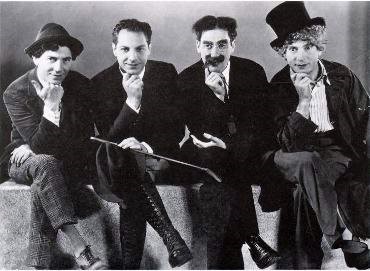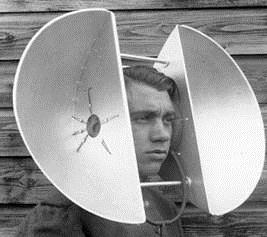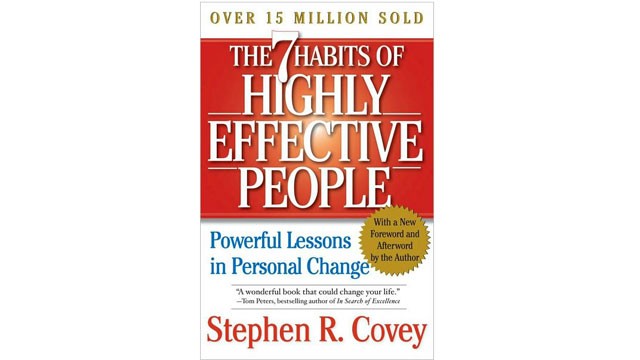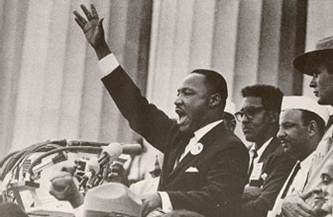 Todd Cherches | Comments Off |
Todd Cherches | Comments Off | Entries in Communication (10)
What's Your "Social Style"?
 Tuesday, March 4, 2014 at 8:47PM
Tuesday, March 4, 2014 at 8:47PM 
One of your co-workers gets so much work done in a day it makes your head spin, but she tends to steamroll over everyone in the process.
Another co-worker is great with details and never misses a trick, but he tends to over-analyze everything and takes forever to make a simple decision.
One of your other co-workers is a nice person and a great listener and teammate. But by trying to please everyone, she fails to please anyone.
Yet another is always enthusiastic, fun to work with, and has a million ideas. Too bad he’s all over the place and never seems to follow up, follow through, or finish anything.
In their classic “Social Styles” model, Robert and Dorothy Bolton labeled the four personality types mentioned above as: Driver, Analytical, Amiable, and Expressive. Of these four types, which person would you most prefer to work with and why? Which one drives you insane? And, perhaps most importantly, which one are YOU?
1. Driver
“Let’s go! Let’s get the job done right now!” She is direct, decisive, and determined. She loves a challenge, is willing to take risks, works at a fast pace, and is all about getting results. However, the Driver can also be seen as impatient, insensitive, dictatorial, and domineering. You want Drivers on your team because they don’t stop til the work is done, but you better be ready to get out of their way.
2. Analytical
“Let’s get the job done — but let’s get it done right!” He is precise, logical, careful, and methodical. Slow and steady wins the race, and nothing slips through the cracks. The Analytical dots every i, crosses every t, and plays by the rules. But by striving for perfection, his “over-analysis paralysis” can often hold things up and drive everyone nuts.
3. Amiable
“Let’s get the job done, but let’s focus on the people!” She is warm, approachable, friendly, inclusive, a good listener, a peacemaker, and a team player. The Amiable is a people-pleaser who genuinely cares about others, doesn’t want to hurt anyone’s feelings, and seeks to make others happy. While focusing on people and relationships, however, she can often lose sight of the task at hand and fail to get things done in a timely manner. When the Amiable asks, “How was your weekend?” they’re not just being polite – they really do care and actually want to know.
4. Expressive
“Let’s get this done! We can do it!” He is energized and energizing, a big-picture thinker, optimistic, visionary, cheerleader, and juggler of numerous things at once. But in his enthusiasm, the Expressive may sometime lose sight of reality. Since he tries to do too much at once, the Expressive often has trouble focusing and is all over the map. He’s excited about the journey, but often doesn't reach the final destination (though he does tend to have a good time along the way).
We all possess aspects of each of the four styles, but we tend to gravitate toward one or two of them. My primary style is Analytical – I love to read and write, analyze issues, design creative solutions, and solve problems. But as a person who runs his own business, I also need to be proactive and decisive — a Driver. As a presenter, facilitator, and professor, when up in front of the room I need to be Expressive. And as an executive coach working one-on-one with my clients, I need to be Amiable.
So the key is to "Know thyself" and be able to leverage one's strengths...but also be able to push ourselves beyond our default style as situations and relationships warrant. To do so takes emotional intelligence, self-awareness, and self-regulation, as well as empathy and social skills. All of which can be developed and improved...if you are willing to work at it!
Each style brings with it its relative advantages and disadvantages. As an Analytical-Driver, I'm a big -- and fast -- reader, researcher, and critical thinker. I process information quickly and am decisive...with an emphasis and priority on getting things done right the first time -- in the most efficient and effective way possible; the way I think is the best way. Sometimes the only way. :) In the process of driving forward at a relentless speed with a goal of maximum efficiency, however, I may sometimes overlook (and over-run) people and relationships. But since I’m aware of this, I’m able to modify my behavior accordingly. Sometimes. Alright...occasionally. Actually, almost never. (But at least I am aware of it! :)
Making it Work
Self-awareness is critical, but it’s only part of the equation. To truly connect with, get along with, collaborate with, and influence others, we need to start by trying to identify their primary and secondary styles...and then adjust our behavior accordingly -- both to the person (or people) and to the situation.
So, when dealing with:
- Drivers: Cut the small talk, pick up the pace, and get right down to business.
- Analyticals: Make sure you did your homework. Prove that you know your stuff, and be prepared to defend your position with logic, facts, data, and evidence.
- Amiables: Find common ground. Care. Connect with them on a personal level. And build trust.
- Expressives: Demonstrate your enthusiasm. Pump up your energy, your pace, and your passion.
Lastly, as you can probably guess, the best teams are composed of a mix of all four styles. Since our natural tendency is to gravitate towards (and to hire) people who are just like us, with this awareness we can better leverage the power of diversity and inclusion.
When Drivers, Analyticals, Amiables, and Expressives work together in a spirit of awareness, openness, understanding, and collaboration, you’ll find that as a “T.E.A.M,” Together Everyone Achieves More.
 Todd Cherches | Comments Off |
Todd Cherches | Comments Off | When A Millennial Is The Boss (Forbes)
 Thursday, January 2, 2014 at 9:02PM
Thursday, January 2, 2014 at 9:02PM 
In this Forbes.com article by Ryan Galloway, Todd is quoted on his thoughts related to generational differences in the workplace with a focus on the issues involved when Gen Y Millennials manage older (Gen X, Baby Boomer, and Traditionalist) employees:
Todd Cherches, co-founder and CEO of the management consulting firm BigBlueGumball, frequently encounters young professionals in manager- or even director-level roles.
"A lot of Millennials have moved up the ladder very quickly,” said Cherches. “They’re in positions that wouldn’t have been open to them 10 or 15 years ago. Many companies have realized that Millennials have a distinct set of skills, and they want to capitalize on that.”
Click here to read the rest of this interesting thought piece on one of today's most prevalent and emotionally-charged workplace challenges.
 Todd Cherches | Comments Off |
Todd Cherches | Comments Off |  Communication,
Communication,  Gen Y,
Gen Y,  Generations,
Generations,  Management,
Management,  Millennials,
Millennials,  Workplace,
Workplace,  leadership in
leadership in  Communication,
Communication,  Management,
Management,  leadership
leadership Listen Up! 8 Tips for Becoming a Better Manager -- Through Better Listening
 Tuesday, December 31, 2013 at 2:51AM
Tuesday, December 31, 2013 at 2:51AM 
Quick! Who’s the best manager you’ve ever worked for? Picture him or her in your mind. Now think: what made you pick this person?
OK, now: Who was the worst manager you’ve ever had? Do the same thing: visualize working for this person while thinking about what made them so horrible.
I can’t guarantee it, but if I had to guess, one of the key differences between these two people was that the good manager actually listened to you, while the bad one didn’t.
Am I right?
When the good manager listened to you, how did it make you feel? Valued? Validated? Respected? Trusted? Confident? Engaged? Empowered? Smart?
And how did the bad manager make you feel most of the time? Probably the exact opposite.
So if you’re a manager — or even if you’re not — look yourself in the mirror and answer this question honestly: Are you a good listener?
More importantly, if you asked other people that question, what would they say about you? If you’re interested in becoming a better manager -- and a more effective leader -- you might find it valuable to revisit how, how often, and how well you listen.
When we do 360 degree evaluations, "Listening" is very often one of the categories that most managers rate themselves the highest in...while others around them rate them the lowest. In other words -- this is where we find the biggest gap: Between the ears.
Good Leaders Listen
Early in my career, I temped in the PR department of a major Hollywood studio. Despite the excitement of working on a studio lot, the job, itself, was mind-numbingly boring, consisting mostly of answering phones, taking messages, and making copies. If you’ve ever temped, you know what that’s like to sit there all day, watching the minutes drag by, while your brain turns to mush. Especially if you aspire to doing something a little more creative and stimulating with your life.
One afternoon, one of the department managers came running out of her office, frantically looking for a PR rep to proofread and edit an urgent press release that needed to go out.
Finding the office empty (with the exception of yours truly sitting there doing nothing), she barked at me: “Where the hell is everybody?” I told her that they were all out to lunch, but that I’d be more than happy to take a crack at it. Without even looking at me, she snarled: “What are you talking about? You can’t do this: you’re just a temp.”
I tried to tell her that I had a B.A. in English, a Master’s degree in Communication, and a year’s experience working for a top New York ad agency, but she just didn’t have any interest at all in listening to me. She left the press release draft on my desk, told me to give it to the first PR rep I saw, and dashed out to a meeting.
The press release draft was a mess. It was badly written, poorly structured, and filled with grammatical and spelling errors. With nothing else to do, I took it upon myself to re-write it...just as an exercise to alleviate my boredom.
When one of the PR reps finally got back, I explained the situation to him and gave him both the original copy and my revised version — without telling him I was the one who did it. His response regarding my revision: "This looks fine -- what's the problem -- just send it out!" So they sent my version out to print...without making a single edit. And no one ever knew -- or asked -- who did it.
This department was always short-handed, overworked, and in need of help. And I was right there in front of them -- ready, willing, and able. I tried numerous times to bring this to their attention, but my offers to assist went unheard, as no one was willing to listen.
A week later, I was hired -- full-time -- to work as an assistant to a comedy writer/producer at Disney. On my first day on the job, I asked him what made him hire me over three other candidates with stronger resumes. His response: “During the interview, you asked really good questions. And no one else did. You struck me as a good listener; and I need someone who knows how to listen.”
So, asking and listening -- not telling -- is what got me that job.
And I soon discovered that having a manager who was willing to listen to me made him a pleasure to work for.
The simple lesson: To be a better manager – or just a better human being – it doesn't hurt to try being a better listener.
8 Quick Tips for Becoming a Better Listener: L-I-S-T-E-N-U-P!
Look at the person: Make eye contact. Pay attention to facial expression, body language, and tone of voice. There’s an old saying that we have two ears and one mouth, so we should spend twice as much time listening as talking. Management guru Peter Drucker said that “The most important thing in communication is to hear what isn’t being said.” And that can only happen if we make the time, and take the time, to truly stop, look, and listen.
Inquire: Ask questions. Ask follow-up questions. Delve deeper. Seek examples. Use paraphrasing and summary clarification to validate understanding. When someone asks you a question, don’t just answer the question — care enough to answer the question behind the question. And when you listen to the response, actively listen to gain true understanding...rather than just selectively listening or listening to respond.
Show that you’re interested: When someone is talking to you, it’s important to physically demonstrate that you value the speaker -- as well as what’s being spoken. Put yourself in their shoes, try to see things from their point of view, and listen with empathy. Engage them in dialogue to make them feel like they’re the most important person in the room. But it must be done genuinely and sincerely -- or it doesn't count. People can see right through you when you're faking it.
Treat the person with respect: Even if you disagree with what they're saying, and may not even like the person, show respect for their viewpoint, and express appreciation for their candor and their contributions. Seek to connect with them on a human level, and on an equal level – person-to-person – regardless of title, status or position -- even if you are more knowledgeable or experienced. If you treat them with dignity and respect, you will earn their trust and respect in return. And that will open up the lines of communication even further.
Encourage the other person: Engage them in dialogue and empower them to speak their mind without hesitancy, self-censorship, or fear of retribution. Create an environment of dialogue, exchange, interaction, openness, honesty, self-disclosure, vulnerability, and trust. Especially when communicating with an introvert, as it may take a little more to get them to open up.
Never make someone regret that they opened up to you: Once you lose the person's trust and damage or destroy the relationship, it’s almost impossible to get it back. Allow the other person to be vulnerable, and be willing to display your vulnerability as well. Maintain confidences and confidentiality. Don’t gossip or talk behind anyone’s back. And follow the “Vegas Rule”: What’s said here, stays here.
Understanding is your primary objective: It’s not enough to simply hear the words being said; you must get at the meaning and the intent of those words. Listen not only with your ears, but with your eyes, your brain, your head, and your heart. When listening, it's not all about YOU; it's all about the other person.
Put your smartphone down: This might be our biggest obstacle to true listening in this day and age. We’re so busy with our devices that we ignore the person (or people) right in front of us. Ask yourself: Is the person on the other end of your device more important than the person (or people) right there in the room with you? If not, put the phone down. Seriously, put it down. Face down. Or in a pocket or drawer or briefcase. Be present. Be focused. Be here now. And give the person speaking to you your undivided attention. Isn’t that what you would want? We both know it is.
In closing, many managers feel and act as if their job is to do all the talking and to have all the answers. But the best leaders know that they don't. They recognize the value and the power of leveraging the collective brain power of the people around them -- and this only happens when we make the time, and take the time, to listen.
Steve Jobs said that we shouldn't hire smart people only to tell them what to do; we should hire smart people so that they can tell us what to do.
So, for a leader, listening requires self-awareness, time, effort, vulnerability, and courage.
As Winston Churchill so eloquently put it: “Courage is what it takes to stand up and speak; courage is also what it takes to sit down and listen.”
 Todd Cherches | Comments Off |
Todd Cherches | Comments Off |  Communication,
Communication,  Management,
Management,  leadership,
leadership,  listening,
listening,  manager in
manager in  Communication,
Communication,  Management,
Management,  leadership
leadership A Brief Tribute to Stephen Covey & His 7 Habits
 Wednesday, July 18, 2012 at 2:18PM
Wednesday, July 18, 2012 at 2:18PM 
With all the thousands of business books out there on the shelves to choose from, my NYU students, clients, and others often ask me, “If I were to read only ONE business book to help me be more effective, what should it be?”
To me, the answer is clear and simple: “The 7 Habits of Highly Effective People” by the late Dr. Stephen R. Covey who just passed away this week.
In short, the 7 Habits are:
1. Be proactive: Don’t wait for things to happen; take action to MAKE them happen;
2. Begin with the end in mind: Start with a preconceived vision and goal;
3. Put first things first: Prioritize and plan;
4. Think “win-win”: Strive for a mutually beneficial relationships and outcomes;
5. Seek first to understand, then to be understood: Listen to, empathize with, and focus on others;
6. Synergize: Work collaboratively to leverage the power of joint contributions;
7. Sharpen the saw: Recharge & refresh.
While the first six are pretty much self-explanatory (although far easier said than done!), the last benefits from some explication:
Long story, short… Two guys are out in the forest chopping wood from dawn til dusk. One of them goes non-stop for hours without a break, assuming that’s the best way to maximize his output. But as is turns out, at the end of the day, the other guy – the one who kept stopping and disappearing many times throughout the day – ends up being the one with the far bigger wood pile. “How can that be!” the first guy asks, “Where did you keep going?” To which the other replies, “To sharpen my saw!”
So the message of Habit 7 is that while we literally need to be sure to keep our tools sharp, metaphorically it reminds us that we need to both mentally and physically make the time and take the time to recharge and refresh.
Covey later added an additional habit, in his book, “The 8th Habit: From Effectiveness to Greatness” in which he encouraged people to “Find your voice and inspire others to find theirs.”
Unfortunately (as my brother Steve pointed out), with his passing there will, alas, be no “9th Habit.”
In the spirit of full disclosure, one thing about his work that must be noted is that Covey did not originate all of the ideas that he espoused; however, he did popularize them, reaching a global audience the size of which few business authors in history, other than Dale Carnegie, have ever achieved.
I guess it could be said that Stephen Covey was the Dale Carnegie of his generation.
In closing, one identifying feature that both Carnegie and Covey have in common is that while much of their work, and many of their principles, have sometimes been minimized by elitists as being “nothing more than just plain common sense,” I think we’ve all seen, as the saying goes, that common sense is not always common practice.
So towards that end, Stephen R. Covey led the way in helping us all to maximize our performance, productivity, and potential.
 Todd Cherches | Comments Off |
Todd Cherches | Comments Off | Dr. Martin Luther King, Jr. - The “King” of Visual Communication
 Monday, January 16, 2012 at 4:00PM
Monday, January 16, 2012 at 4:00PM 
Among the many amazing features of Dr. King’s numerous classic speeches – including, of course, his iconic, “I Have a Dream” speech – was his use of “visual communication”… his talent and ability to paint pictures with words.
While Dr. King drew on a variety of rhetorical techniques to “Educate, Engage, & Excite” TM his audiences – e.g., alliteration, repetition, rhythm, allusion, and more – his ability to capture hearts and minds through the creative use of relevant, impactful, and emotionally moving metaphors was second to none.
What do metaphors do? They make the abstract concrete; the intangible tangible; the unfamiliar familiar, and the complex simple. By joining together in an innovative and powerful way the seemingly unconnected, effective metaphors imbed powerful and memorable images in our minds, while at the same time forging a powerful and memorable connection between speaker and listener.
With that thought in mind, I’ll leave with you this powerful and moving list of metaphors and images that Dr. King left with us:
- A great beacon of light and hope
- The flames of withering injustice
- A joyous daybreak to end the long night of captivity
- A lonely island of poverty
- A vast ocean of material prosperity
- We have come…to cash a check
- America has defaulted on this promissory note
- A bad check which has come back marked “insufficient funds”
- The bank of justice…the vaults of opportunity
- The luxury of cooling off
- The tranquilizing drug of gradualism
- The dark and desolate valley of segregation
- The sunlit path of racial justice
- The quicksands of racial injustice
- The solid rock of brotherhood
- The sweltering summer of…discontent
- An invigorating autumn of freedom and equality
- The whirlwinds of revolt
- The bright day of justice
- The palace of justice
- Satisfy our thirst for freedom
- Drinking from the cup of bitterness and hatred
- The high plane of dignity and discipline
- Until justice rolls down like waters and righteousness like a mighty stream
- The storms of persecutions
- The winds of police brutality
- The valley of despair
- The table of brotherhood
- The heat of injustice
- The heat of oppression
- An oasis of freedom and justice
- The mountain of despair
- A stone of hope
- A beautiful symphony of brotherhood
- Let freedom ring…
 Todd Cherches | Comments Off |
Todd Cherches | Comments Off |  Communication,
Communication,  Dream,
Dream,  MLK,
MLK,  Martin Luther King,
Martin Luther King,  Metaphor,
Metaphor,  Presentation,
Presentation,  Speeches,
Speeches,  Visual,
Visual,  vizthink
vizthink 
